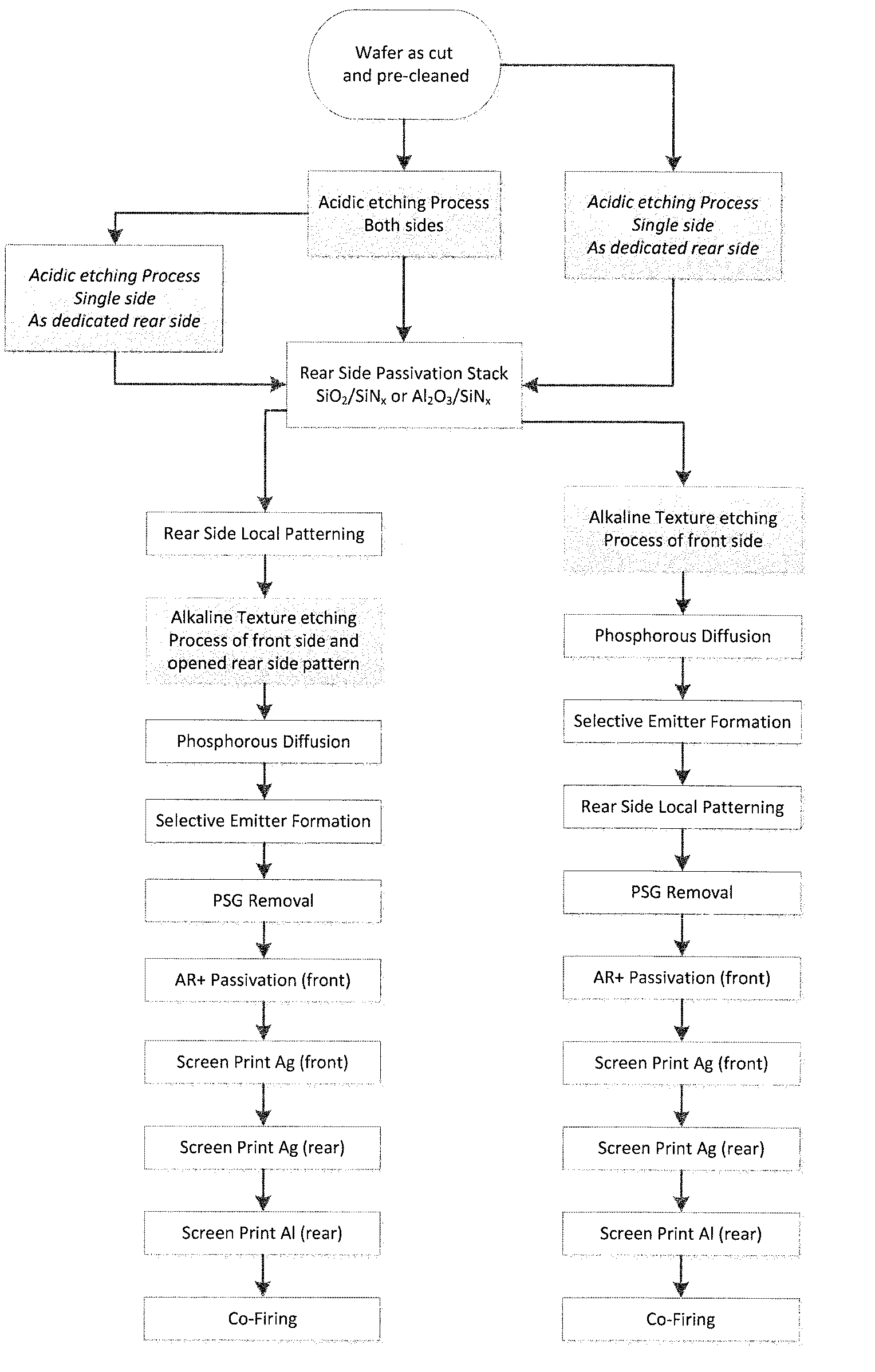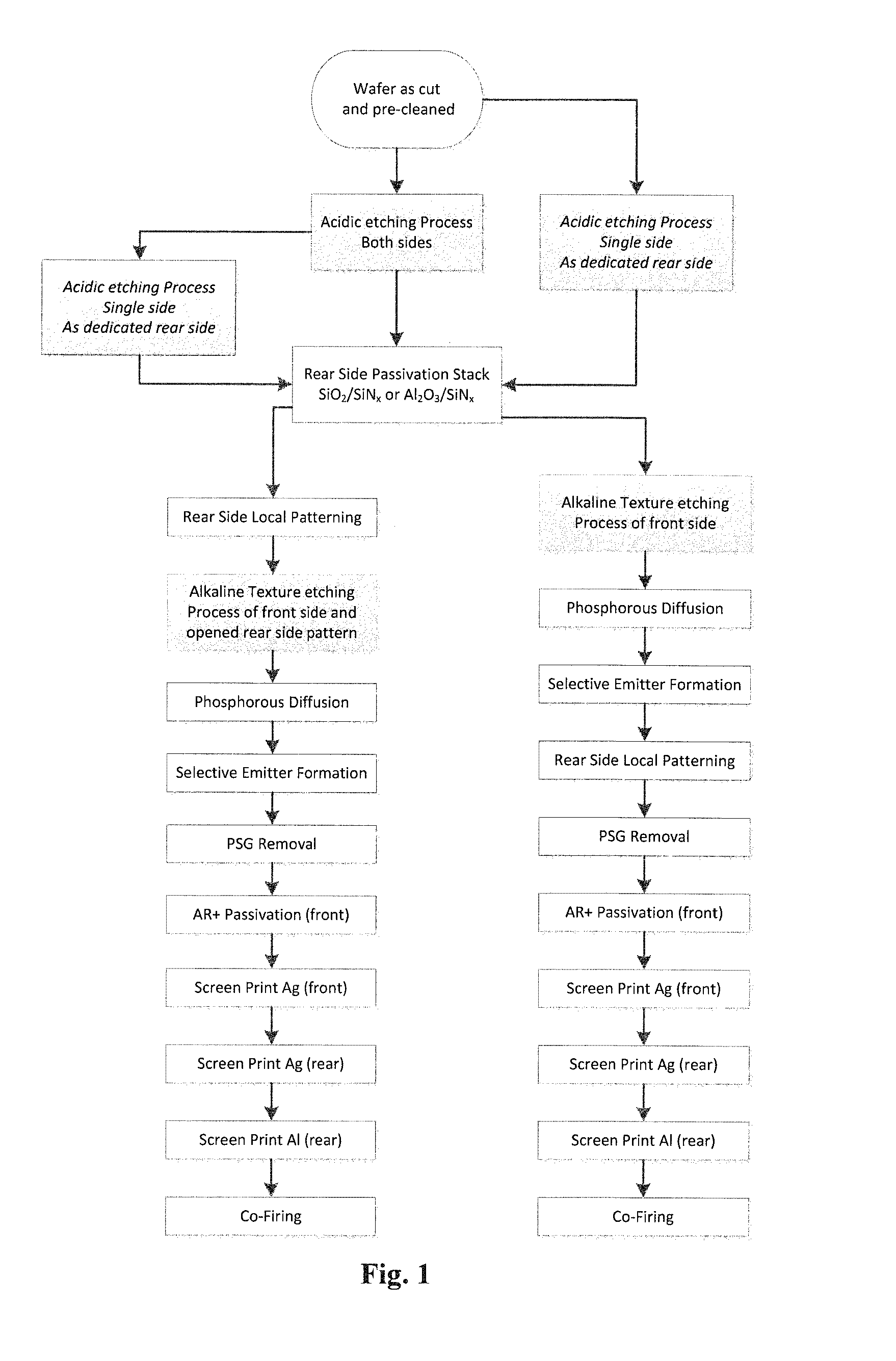Acidic etching process for si wafers
a technology of acidic surface etching and silicon wafer, which is applied in the manufacture of final products, semiconductor/solid-state devices, basic electric elements, etc., can solve the problems of avoiding the need for extensive cleaning, and achieve the effects of reducing cu findings, reducing roughness, and reducing cos
- Summary
- Abstract
- Description
- Claims
- Application Information
AI Technical Summary
Benefits of technology
Problems solved by technology
Method used
Image
Examples
example 1
[0049]Monocrystalline wafers obtained by the Czochralski process were contacted with a mixture of AcOH (98 wt.-% in water), HNO3 (69 wt.-% in water), and HF (49 wt.-% in water) as acidic etching agent. The volume ratio of AcOH:HNO3:HF was 10:6:4. The wafers were compared with reference wafers that were processed through the alkaline saw damage etch process, achieving polished surfaces. The quality of the deposited passivation stack was measured comparing the life time and implied Voc in so called “Quasi Tau Samples” using the Sinton photoconductance method that is used for process quality control. Said wafer had a thickness of about 160 μm and were measured at a carrier density of 1E+15. The measured life time was 182 μsec in average for the acidic etched samples, resulting in an implied voltage of 678 mV, while result of the reference samples was 172 μsec in average and also 678 mV.
example 2
[0050]The rear side of monocrystalline Si wafer as cut were contacted with a mixture of HNO3 (67.5 wt.-% in water) and HF (49 wt.-% in water) for 3 minutes at 15 ° C. The volume ratio of HNO3 HF was 6.5:1 and a Si removal of 9.5 μm was obtained. FIG. 2 shows a SEM image of a rear side of a monocrystalline Si wafer treated with said mixture under the above conditions.
example 3
[0051]The rear side of a monocrystalline Si wafer as cut were contacted for 3 minutes at 12° C. with a mixture of HNO3 (69.5 wt.-% in water) and HF (49 wt.-% in water). The volume ratio of HNO3:HF was 9:1 and a Si removal of 7 μm was obtained. FIG. 3 shows a SEM image of a rear side of a monocrystalline Si wafer treated with said mixture under the above conditions.
PUM
 Login to View More
Login to View More Abstract
Description
Claims
Application Information
 Login to View More
Login to View More - R&D
- Intellectual Property
- Life Sciences
- Materials
- Tech Scout
- Unparalleled Data Quality
- Higher Quality Content
- 60% Fewer Hallucinations
Browse by: Latest US Patents, China's latest patents, Technical Efficacy Thesaurus, Application Domain, Technology Topic, Popular Technical Reports.
© 2025 PatSnap. All rights reserved.Legal|Privacy policy|Modern Slavery Act Transparency Statement|Sitemap|About US| Contact US: help@patsnap.com



